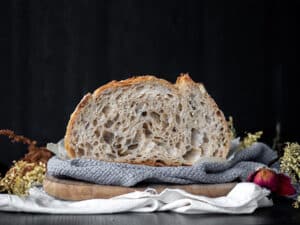Patients affected by celiac disease are instructed to avoid all foods containing gluten, the key component in bread fermentation. How to compensate for the lack of gluten and allow these sufferers to consume bakery goods?
Gluten-free breadmaking and fermentation: solutions can be found!
The action of gluten in breadmaking
Engineers and experts at Lesaffre’s laboratories try to offer alternative solutions to eliminating gluten from bakery goods. Although yeast does not contain gliadin and its consumption cannot cause any harm to patients suffering from celiac disease (on the contrary, it is a rich food source of proteins and vitamins), its activity mainly results, during fermentation, in the production of aromatic agents and gases contributing to dough rise.
In the absence of gluten, gas retention is greatly compromised. However active the yeast, the ensuing gases escape and the loaf becomes dense and flat.
An industrial solution to “gluten-free”
Through the intermediary of the Lesaffre Group’s global research centre, a special bread improver has been developed containing a food-quality gum, which permits gas retention for the manufacture of corn-, rice-, millet-, and cereal-based bread found commonly throughout the Middle East, etc. This improver is increasingly used by specialist bakers in Europe for the production of special “gluten-free” bread and the preparation of ready-to-use mixes.
Albeit technically a high-performance product, this solution is not accessible to home bakers, who like to make their own bread.
Towards “gluten-free” home breadmaking
- Pectins and gliadins are gelling agents, which, if incorporated into the dough, offer a minimum amount of impermeability to help retain the gases produced during fermentation, despite the lack of gluten. These products are used in the manufacture of jams and preserves, jellied meat, etc., and are now easily obtainable from shops.
- Adding whisked egg whites to fermented dough also helps to trap air bubbles that develop in the oven and contribute towards more volume and air-holes in a loaf.




